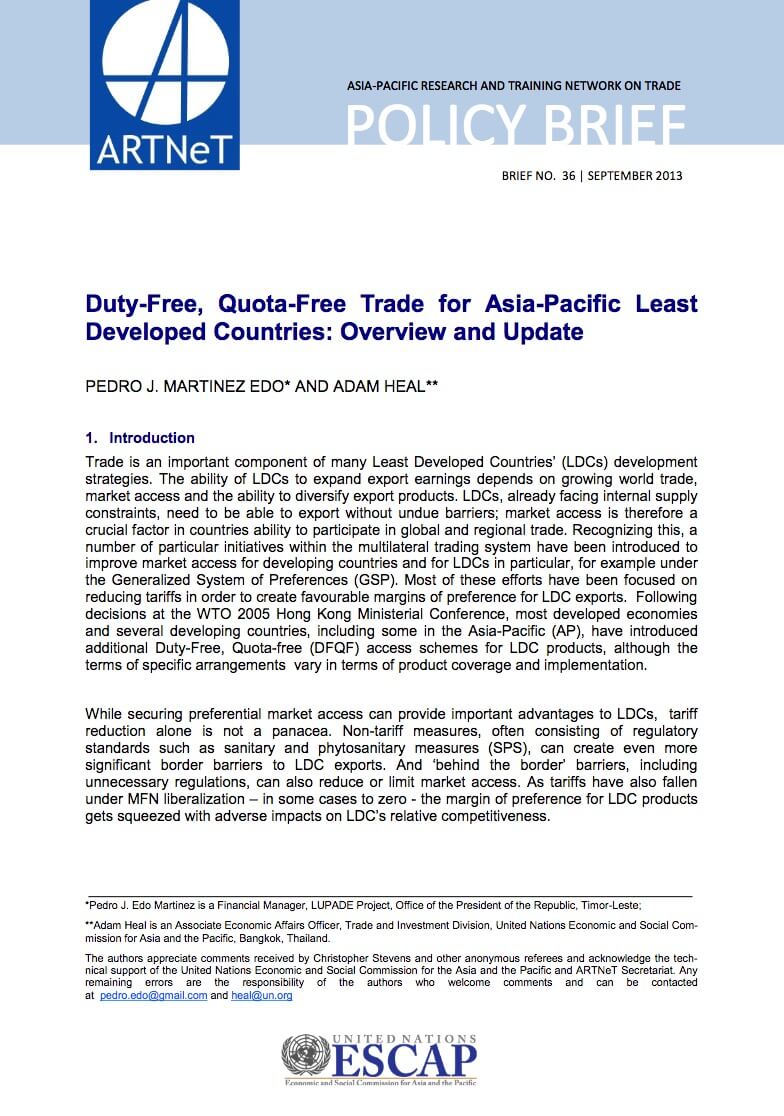Duty-Free, Quota-Free Trade for Asia-Pacific Least Developed Countries: Overview and Update

Trade is an important component of many Least Developed Countries’ (LDCs) development strategies. The ability of LDCs to expand export earnings depends on growing world trade, market access and the ability to diversify export products. LDCs, already facing internal supply constraints, need to be able to export without undue barriers; market access is therefore a crucial factor in countries ability to participate in global and regional trade. Recognizing this, a number of particular initiatives within the multilateral trading system have been introduced to improve market access for developing countries and for LDCs in particular, for example under the Generalized System of Preferences (GSP). Most of these efforts have been focused on reducing tariffs in order to create favourable margins of preference for LDC exports. Following decisions at the WTO 2005 Hong Kong Ministerial Conference, most developed economies and several developing countries, including some in the Asia-Pacific (AP), have introduced additional Duty-Free, Quota-free (DFQF) access schemes for LDC products, although the terms of specific arrangements vary in terms of product coverage and implementation.
